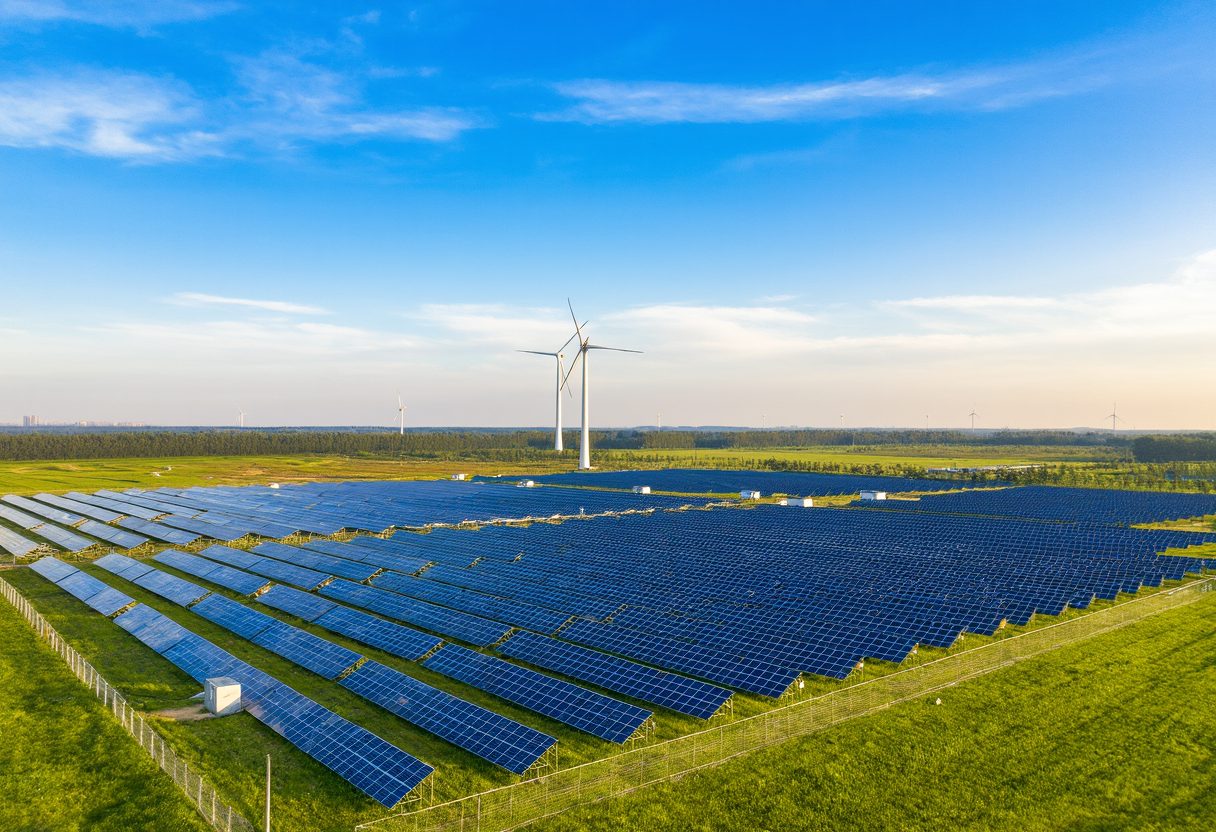Understanding the Impact of Polycrystalline Solar Panels in Today’s Energy Market
Polycrystalline solar panels play a crucial role in today’s energy landscape. This article delves into their advantages, market trends, and environmental contributions. With global energy needs shifting towards sustainability, understanding polycrystalline solar panels becomes essential for stakeholders and consumers alike. Explore how these panels are shaping our renewable energy future.
Defining Polycrystalline Solar Panels
Polycrystalline solar panels consist of multiple silicon crystals and are known for their unique manufacturing process. This process allows for energy production that is incredibly efficient while remaining cost-effective. Compared to monocrystalline modules, polycrystalline solar panels are generally easier to produce, which contributes to their lower price point. This affordability makes them an accessible option for many consumers looking to make an investment in renewable energy. As the world shifts towards greener practices, polycrystalline solar panels offer a viable solution for addressing the growing energy demands while minimizing environmental impact. Their structure and performance highlight a balanced approach between affordability and efficiency, attracting diverse users in the energy market.
Environmental Benefits of Polycrystalline Solar Panels
The environmental advantages associated with polycrystalline solar panels are significant. Firstly, their production process is more resource-efficient than some alternative technologies, resulting in less waste. Moreover, the utilization of these panels helps lower carbon emissions by harnessing solar energy instead of fossil fuels. Many studies have shown that the deployment of polycrystalline solar panels contributes to a significant reduction in greenhouse gas emissions. Additionally, they promote the use of renewable energy sources within urban and rural areas alike, encouraging communities to adopt sustainable practices. By integrating polycrystalline solar panels into their energy plans, users can directly contribute to the fight against climate change, reinforcing the importance of transitioning to renewable energy solutions.
Market Trends Influencing Polycrystalline Solar Panels
Several key market trends are shaping the role of polycrystalline solar panels within the global energy strategy. The growing emphasis on energy independence leads consumers and governments alike to seek renewable options that reduce reliance on imported fossil fuels. As countries begin to prioritize sustainability, polycrystalline solar panels have emerged as a favored technology due to their affordability and efficiency. Additionally, advancements in solar technology continue to enhance the performance of polycrystalline panels, potentially expanding their market share further. Analysts predict that as manufacturing techniques become more refined, the cost of solar panels will keep decreasing, thereby attracting a larger customer base. The convergence of these trends solidifies the standing of polycrystalline solar panels in contemporary energy discussions.
User Experience and Satisfaction with Polycrystalline Solar Panels
The user experience associated with polycrystalline solar panels emphasizes reliability and satisfaction. Many users report successful installations that outperform their expectations in energy generation. The longevity and durability of these panels mean that maintenance is often minimal, further appealing to homeowners. Installers frequently note that clear communication about the benefits of polycrystalline solar panels significantly enhances customer confidence and satisfaction. Feedback indicates that users appreciate the extra savings on energy bills resulting from solar adoption. When considering the overall effectiveness of polycrystalline solar panels, it’s clear that they provide a user-friendly option for transitioning to renewable energy, demonstrating their potential to meet customer needs successfully.
Future Innovations in Polycrystalline Solar Panels
The future of polycrystalline solar panels is poised for transformative innovations. As research in solar technologies progresses, enhancements in efficiency are expected, thus broadening their appeal. Emerging technologies such as bifacial panels and improved solar tracking systems could integrate with existing polycrystalline designs, further increasing their effectiveness. Additionally, as global policies adopt stricter environmental regulations, the promotion of polycrystalline solar panels may serve as a pathway to energy compliance. By aligning technological advancements with sustainability goals, stakeholders can capitalize on the renewable energy sector's growth. Ultimately, the continued evolution of polycrystalline solar panels will be instrumental in shaping the energy landscape of the future.
A Unique Perspective: The Social Aspect of Solar Adoption
Exploring the broader social implications of polycrystalline solar panel adoption reveals nuanced insights. Community-driven initiatives that promote solar energy adoption can foster social equity by empowering underserved populations. By enhancing access to budget-friendly solar solutions, these panels facilitate collective energy independence. This aspect underscores the importance of considering not just the environmental benefits but also the social justice angles associated with renewable energy solutions. Engaging communities in discussions about polycrystalline solar panels can help raise awareness and promote environmental responsibility. A well-informed public stance toward renewable energy technology will ultimately pave the way for larger systemic changes within the energy sector.
